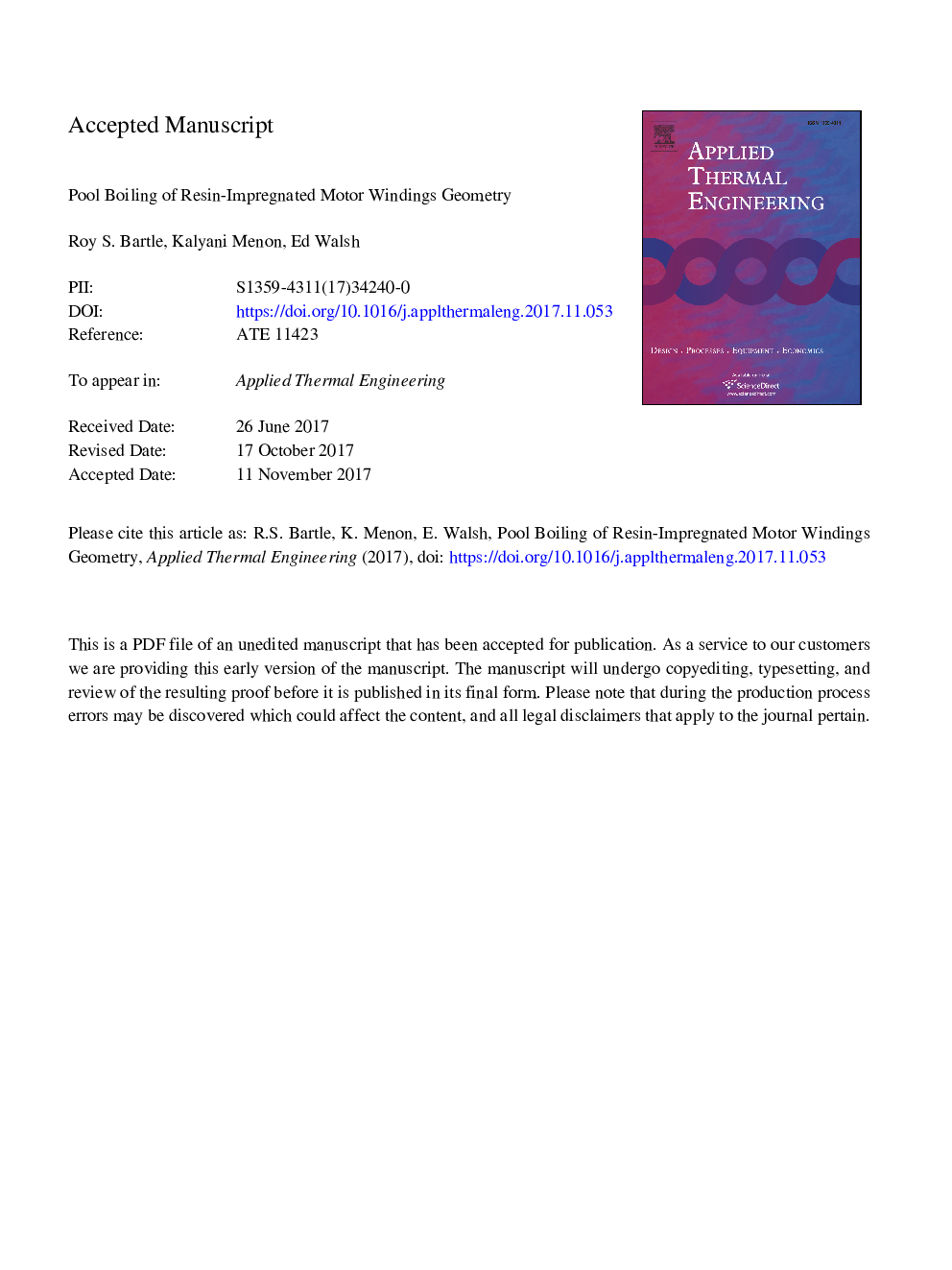| Article ID | Journal | Published Year | Pages | File Type |
|---|---|---|---|---|
| 7046459 | Applied Thermal Engineering | 2018 | 16 Pages |
Abstract
More effective cooling strategies enable lighter and more power dense electrical machines to be developed. Pool boiling using the fluorocarbon Novec 7000 was generated on copper surfaces, both flat and modified to reflect the geometry of resin-impregnated windings of an electrical machine. Four experimental surfaces were exposed to the fluorocarbon in the nucleate pool boiling regime. The motor windings geometry (MWG) surfaces displayed an improved heat transfer coefficient compared to the flat surfaces due to a longer contact line between the heated surface and the vapour during bubble development. An MWG surface was also tested at orientations from 0° (horizontally-upward) to 90°, which did not significantly affect heat transfer; while the 128° orientation gave higher heat transfer coefficients at low heat fluxes, and lower heat transfer coefficients at high heat fluxes. The 180° orientation produced an immediate boiling crisis. The flat plate experimental data was evaluated and compared with the predictions of the Borishanskii and Mostinski, Gorenflo-Kenning, Kruzhilin, Kutateladze, Labuntsov, Leiner, Rohsenow, and Stephan-Abdelsalam nucleate boiling correlations, with the Rohsenow and Labuntsov models showing best agreement with data.
Related Topics
Physical Sciences and Engineering
Chemical Engineering
Fluid Flow and Transfer Processes
Authors
Roy S. Bartle, Kalyani Menon, Edmond Walsh,
